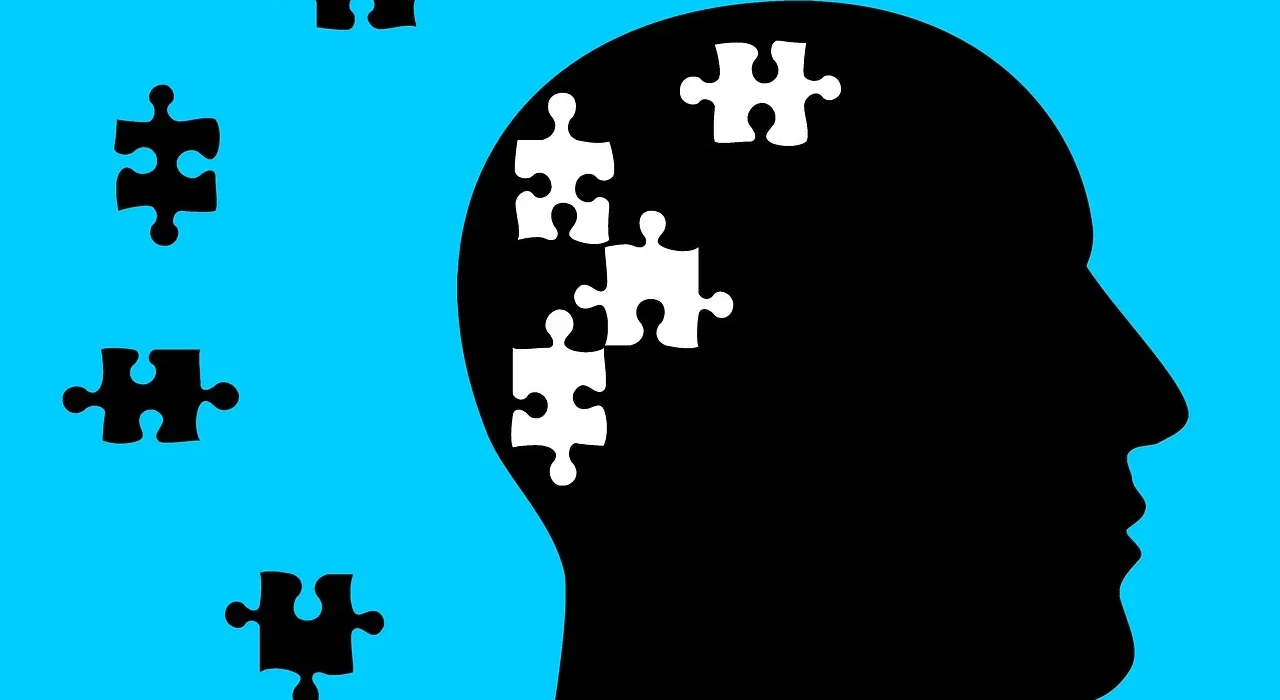Uncovering Adult Trauma: Types, Signs & Solutions

Unlike childhood trauma, which often receives significant attention, adult trauma can stem from various sources, including accidents, natural disasters, violence, or ongoing stressors like financial instability or relationship problems.
Adult trauma encompasses a broad spectrum of experiences that result in lasting emotional, psychological, and sometimes physical distress.
Why addressing adult trauma is crucial
Addressing adult trauma is crucial because it can significantly impact an individual’s well-being and quality of life.
Unresolved trauma may lead to a range of adverse outcomes, including mental health disorders, substance abuse, relationship difficulties, and physical health problems.
By recognizing the signs and seeking appropriate support, individuals can embark on a path toward healing and recovery.
Understanding Adult Trauma
Defining trauma: Types and forms
Trauma refers to an overwhelming and distressing experience that exceeds one’s ability to cope and process effectively.
It can manifest in various forms, including acute trauma resulting from a single event, such as a car accident or assault, or complex trauma arising from prolonged exposure to stressful or traumatic situations, such as abuse or neglect.
Impact of trauma on adults: Physical and psychological effects
The impact of trauma on adults can be profound and multifaceted. Physically, trauma may manifest as chronic pain, tension, headaches, or other somatic symptoms.
Psychologically, trauma can lead to symptoms such as anxiety, depression, flashbacks, nightmares, hypervigilance, and difficulties with emotion regulation and interpersonal relationships.
Recognizing Signs of Adult Trauma
Behavioral indicators: Changes in behavior and habits
Adults experiencing trauma may exhibit changes in behavior and habits, such as increased irritability, withdrawal from social activities, substance abuse, risk-taking behavior, or difficulty maintaining routines and responsibilities.
Emotional symptoms: Mood swings, anxiety, and depression
Emotional symptoms of adult trauma can include frequent mood swings, intense anxiety or panic attacks, feelings of sadness or hopelessness, emotional numbness, irritability, and difficulty experiencing joy or pleasure in previously enjoyable activities.
Cognitive effects: Memory issues, concentration difficulties
Adult trauma can also impact cognitive functioning, leading to difficulties with memory, concentration, decision-making, and problem-solving.
Individuals may experience intrusive thoughts or memories related to the traumatic event, as well as difficulty focusing on tasks or processing information effectively.
Physical manifestations: Unexplained pains and ailments
Physical manifestations of adult trauma may include unexplained pains or ailments, such as headaches, stomachaches, muscle tension, fatigue, or changes in appetite or sleep patterns.
These physical symptoms may persist despite medical evaluation and treatment.
Exploring Common Triggers of Trauma
Identifying triggers: Events or situations that evoke trauma responses
Triggers are stimuli or reminders that elicit distressing emotional or physiological reactions associated with the traumatic event.
Common triggers may include specific sights, sounds, smells, places, anniversaries, or interpersonal interactions that evoke memories or sensations related to the trauma.

Common triggers in everyday life
In everyday life, common triggers for individuals with unresolved trauma may include loud noises, crowded spaces, certain types of touch, conflicts or arguments, intimacy or sexual encounters, news reports of traumatic events, or specific locations reminiscent of the trauma.
How triggers vary among individuals
Triggers can vary widely among individuals based on their unique experiences, sensitivities, and coping mechanisms.
What may be triggering for one person may not have the same effect on another. Understanding and identifying personal triggers is essential for managing and minimizing their impact on daily functioning.
The Cycle of Unresolved Trauma
Understanding the cycle: From trigger to response
The cycle of unresolved trauma typically involves a triggering event or stimulus that activates emotional or physiological responses associated with the traumatic experience.
These responses may include fear, anxiety, anger, or a sense of detachment, which can lead to avoidance or coping behaviors aimed at managing or alleviating distress.
How unresolved trauma perpetuates negative patterns
Unresolved trauma can perpetuate negative patterns of thoughts, emotions, and behaviors that interfere with an individual’s ability to function effectively in various areas of life.
These patterns may include self-destructive behaviors, relationship difficulties, substance abuse, or chronic stress and anxiety.
Breaking the cycle: Strategies for intervention
Breaking the cycle of unresolved trauma requires a multifaceted approach that addresses underlying emotional wounds, maladaptive coping strategies, and patterns of avoidance or denial.
Strategies for intervention may include therapy, self-care practices, social support, and trauma-informed interventions designed to promote healing and resilience.
Impact Trauma on Relationships
Effects of trauma on Family, friends, and romantic partners
Trauma can profoundly impact relationships, affecting how individuals interact with family members, friends, and romantic partners.
Common effects may include difficulties with trust, intimacy, communication, and emotional regulation, as well as cycles of conflict, withdrawal, or reenactment of past traumas.
Common challenges faced in relationships
Challenges faced in relationships affected by trauma may include difficulties with emotional intimacy, boundaries, communication, and conflict resolution.
Both survivors and their loved ones may struggle to understand and navigate the effects of trauma on their relationships, leading to misunderstandings, resentment, or distance.
Rebuilding trust and intimacy
Rebuilding trust and intimacy in relationships affected by trauma requires patience, empathy, and mutual support.
It involves creating a safe and supportive environment where individuals feel heard, respected, and valued.
Therapy can be instrumental in helping couples and families navigate the challenges of rebuilding trust and intimacy after trauma.
Coping Mechanisms
Unhealthy coping mechanisms: Substance abuse, self-harm, avoidance
In response to trauma, individuals may develop unhealthy coping mechanisms as a way to manage distressing emotions and memories.
These may include substance abuse, self-harm, disordered eating, excessive work or exercise, or engaging in risky behaviors as a means of escape or temporary relief.
The importance of healthy coping strategies
Healthy coping strategies are essential for effectively managing and processing trauma constructively and sustainably.
These may include seeking social support, engaging in self-care practices, pursuing creative outlets or hobbies, practicing mindfulness and relaxation techniques, and seeking professional help when needed.
Finding support: Therapy, support groups, and community resources
Finding support from others who understand and empathize with the experience of trauma can be invaluable in the healing process.
This may involve individual therapy, group therapy, support groups, peer mentoring programs, or online communities where individuals can share their experiences, receive validation, and learn coping strategies from others.
Seeking Therapy
Signs it’s time to seek therapy
It may be time to seek therapy if you are experiencing persistent symptoms of trauma that interfere with your daily functioning, relationships, or overall well-being. Signs may include overwhelming emotions, intrusive thoughts or memories, difficulty coping with stress, or a sense of hopelessness or despair.
Overcoming barriers to seeking help
Barriers to seeking help for trauma may include stigma, shame, fear of judgment or rejection, financial constraints, logistical challenges, or cultural beliefs about mental health and therapy.
Overcoming these barriers often requires courage, self-compassion, and reaching out to trusted individuals or professionals for support and guidance.
Types of therapy for addressing adult trauma
Various types of therapy can be effective in addressing adult trauma, including cognitive-behavioral therapy (CBT), dialectical behavior therapy (DBT), eye movement desensitization and reprocessing (EMDR).
Also, somatic experiencing, mindfulness-based approaches, and trauma-informed care. The most suitable approach depends on individual needs, preferences, and goals for therapy.
Trauma-Informed Care
What is trauma-informed care?
Trauma-informed care is an approach to treatment that recognizes the widespread impact of trauma and integrates knowledge about trauma into all aspects of service delivery.
It emphasizes safety, trustworthiness, choice, collaboration, and empowerment, intending to minimize retraumatization and promote healing and recovery.

Implementing trauma-informed approaches in therapy
Implementing trauma-informed approaches in therapy involves creating a safe and supportive environment where individuals feel heard, respected, and empowered.
This may include using trauma-sensitive language, respecting boundaries and autonomy, providing psychoeducation about trauma and its effects, and offering choices and alternatives in treatment.
Benefits of trauma-informed care for adults
Trauma-informed care can offer numerous benefits for adults affected by trauma, including increased feelings of safety, trust, and validation.
This reduced shame and stigma associated with trauma experiences; improved engagement and retention in treatment; enhanced coping skills and resilience; and greater opportunities for healing and recovery.
Healing Journey: Strategies and Techniques
Cognitive-behavioral therapy (CBT) techniques
Cognitive-behavioral therapy (CBT) is a widely used and evidence-based approach to treating trauma-related symptoms.
It focuses on identifying and challenging negative thought patterns and beliefs, learning coping skills to manage distressing emotions, and gradually facing and processing traumatic memories in a safe and controlled manner.
Eye Movement Desensitization and Reprocessing (EMDR)
Eye Movement Desensitization and Reprocessing (EMDR) is a specialized therapy approach that involves using bilateral stimulation, such as eye movements or tapping.
This helps individuals process and reprocess traumatic memories and associated emotions. EMDR aims to desensitize the emotional charge of traumatic memories and facilitate adaptive resolution.
Mindfulness and meditation practices
Mindfulness and meditation practices can be beneficial for individuals coping with trauma by promoting present-moment awareness, acceptance, and self-compassion.
Mindfulness techniques, such as deep breathing, body scans, and guided imagery, can help reduce physiological arousal and enhance emotional regulation and resilience.
Art therapy and creative expression
Art therapy and creative expression can provide alternative avenues for processing and expressing emotions related to trauma when words alone may be insufficient.
Through art-making, individuals can externalize their internal experiences, explore symbolic meanings, and tap into their innate creativity as a means of healing and self-discovery.
Self-Care Practices
Importance of self-care in healing from trauma
Self-care is an essential component of healing from trauma, as it involves nurturing one’s physical, emotional, and mental well-being in intentional and compassionate ways.
Engaging in self-care activities can help individuals recharge, replenish their resources, and build resilience in the face of ongoing challenges.
Self-care strategies: Physical, emotional, and mental well-being
Self-care strategies for healing from trauma may include practices that promote physical health and relaxation, such as exercise, nutrition, sleep hygiene, and relaxation techniques.
These activities support emotional well-being, such as journaling, creative expression, spending time in nature, or engaging in pleasurable activities; and practices that enhance mental well-being, such as mindfulness meditation, cognitive restructuring, and self-compassion exercises.
Incorporating self-compassion into daily life
Self-compassion involves treating oneself with kindness, acceptance, and understanding, especially in moments of suffering or difficulty.
Cultivating self-compassion can counteract self-criticism, shame, and perfectionism often associated with trauma, fostering a sense of inner strength, resilience, and interconnectedness with others.
Building Resilience
Resilience as a key component of healing
Resilience refers to the ability to adapt and bounce back from adversity, trauma, or significant life challenges.
Building resilience is a key component of healing from trauma, as it involves developing inner strengths, coping skills, and supportive relationships that help individuals navigate and overcome adversity.
Developing resilience: Finding strength in adversity
Developing resilience involves cultivating personal qualities and resources that foster adaptability, optimism, and growth in the face of adversity.
This may include developing a sense of purpose, fostering positive relationships, enhancing problem-solving skills, cultivating self-awareness and self-regulation, and nurturing a hopeful outlook on life.
Cultivating a supportive environment
Cultivating a supportive environment is essential for fostering resilience and healing from trauma. This may involve surrounding oneself with supportive friends, family members, or peers.
They offer empathy, validation, and encouragement; seek out positive role models or mentors who embody resilience; and engage in activities and communities that promote connection, belonging, and social support.
Long-Term Recovery
The journey of long-term recovery: Ups and downs
The journey of long-term recovery from trauma is often characterized by ups and downs, progress and setbacks, as individuals navigate the complexities of healing and rebuilding their lives.
It is not a linear process but rather a nonlinear journey that unfolds over time, with its unique challenges and opportunities for growth.
Maintaining progress: Relapse prevention strategies
Maintaining progress in long-term recovery involves implementing relapse prevention strategies to minimize the risk of setbacks or re-traumatization.
These may include identifying and avoiding triggers, developing healthy coping mechanisms, cultivating self-awareness and self-regulation, setting realistic goals, and seeking ongoing support from therapists, support groups, or mentors.
Celebrating milestones and victories
Celebrating milestones and victories along the journey of recovery is essential for acknowledging progress, building confidence, and reinforcing positive behaviors.
Whether it’s completing a therapy session, reaching a personal goal, or experiencing moments of joy and connection, recognizing and celebrating these achievements can fuel motivation and resilience in the face of ongoing challenges.
Conclusion
In conclusion, adult trauma can have profound and far-reaching effects on individuals’ lives, but it is possible to heal and recover with the right support and resources.
By recognizing the signs of trauma, seeking therapy, and implementing healthy coping strategies, individuals can embark on a journey of healing, resilience, and personal growth.
For those on the path to recovery from trauma, it’s essential to remember that healing is a journey, not a destination.
It’s okay to seek help, to take small steps, and to be patient with oneself along the way. You are not alone, and there is hope for a brighter future ahead.
Addressing adult trauma is not only essential for individual well-being but also for creating a more compassionate and resilient society.
By raising awareness, reducing stigma, and prioritizing trauma-informed care, we can create safer, more supportive environments where healing and recovery are possible for all.









